Expo 2025 Osaka: A Wanderer’s Guide to Europe
The final part of the Wanderer’s Guide to Expo 2025 Osaka brings us to Europe — our last stop.
Sense of Wander: ★★★★★
Inspired by the image of Myaku-Myaku riding Hokusai’s Great Wave — part of the Expo 2025 Osaka stamp rally — I turned to AI to bring this vision to life. It now sets the scene for part three of this Wanderer’s Guide, where the Expo’s mascot continues its journey westward to Europe.
OSAKA, Japan — We are now at Expo 2025 Osaka — the final chapter of this three-part Wanderer’s Guide. We began in Asia, Oceania & Central Asia, journeyed west through the Middle East and North Africa, and now, we arrive in Europe.
Admittedly, I hadn’t planned to explore quite so many European pavilions — but one visit tends to lead to another. My Expo stamp passport is nearly full, my camera roll overflowing with videos, and my legs are beginning to feel the weight of it all. Yet Europe offers a different rhythm. A shift in tempo.
I wasn’t able to enter the Netherlands or Italy pavilions — both were always packed, with wait times stretching over two hours. Still, after visiting more than a dozen others, I’ve gathered enough to share what stays with me.
Having spent years in Italy and the UK, the experience here feel less like discovery but more like return. These are places I’ve studied, lived in, and wandered through. Yet, within these imaginative spaces — often no larger than a building or two — I’m reminded that even familiar cultures have stories left to tell, and new ways of telling them.
Here, you’ll find bold, architecturally ambitious pavilions alongside quieter, more contemplative ones. Some celebrate technology and future, while others invite you into rooms filled with nature, culture, craft — and an idealised vision of a better world.
So come along. No passport required — just an open mind and a touch of that wanderer’s spirit. We’re at the final stop. Let’s begin!
Europe
🇷🇴 Romania
🇭🇷 Croatia
🇵🇱 Poland
🇱🇻🇱🇹 The Baltics (Latvia & Lithuania)
🇩🇪 Germany
🇫🇷 France
🇪🇸 Spain
🇪🇺 European Union
Special Pavilions
🇷🇴 Romania Pavilion



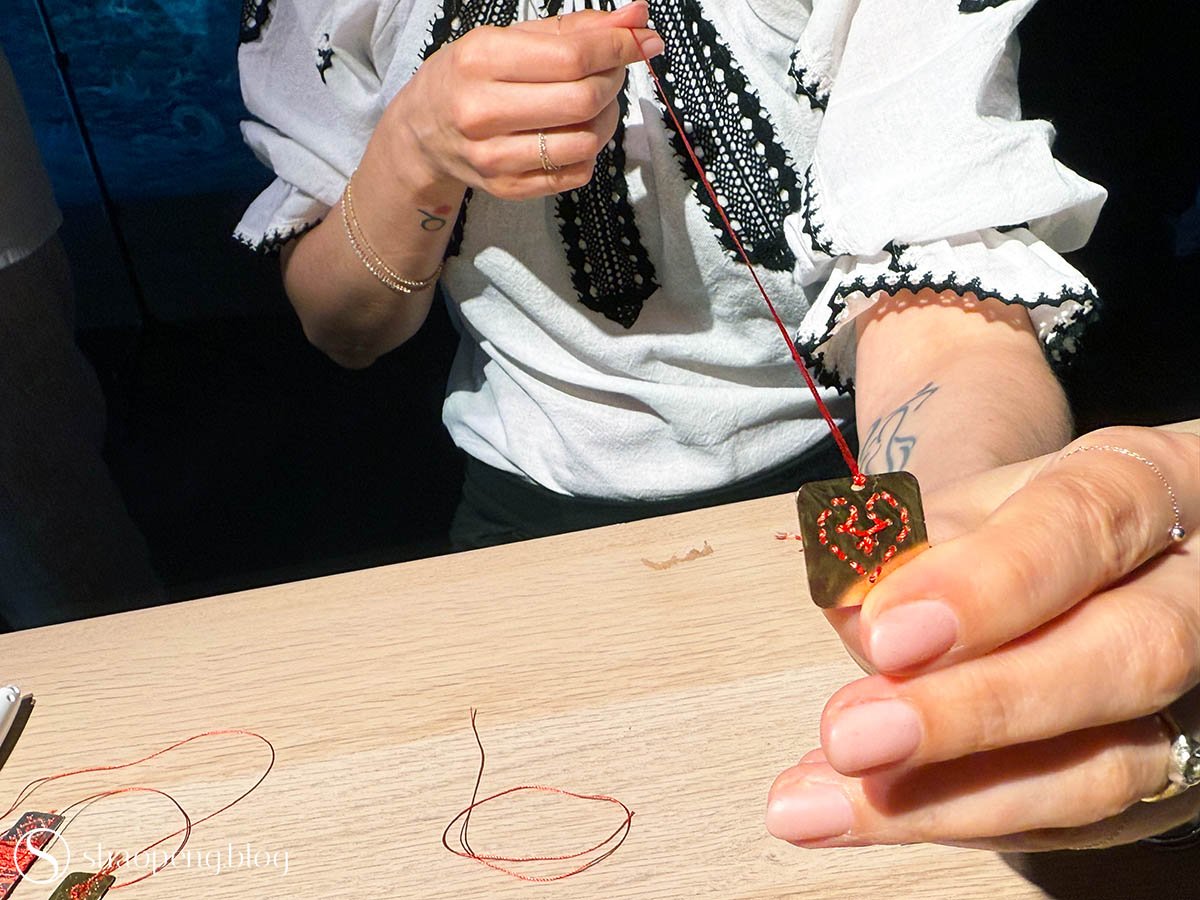

I’ve passed by the Romania Pavilion many times — its solemn, humble wooden exterior evokes both mystery and wonder. But outside, it’s always busy: one queue for the exhibition, the other for the restaurant.
On my last day at the Expo, I tell myself I can’t miss it — even if it means waiting. It’s a weekend morning, the kind that draws even more visitors. I stand in line for over an hour, rain soaking my runners. But I’m not alone — an exciting conversation with a dear friend turns that long wait into something light, even memorable.
Stepping inside this “Romanian Magic Box,” visitors are greeted by a holographic projection of a Cucuteni statuette, a relic from one of Europe’s oldest civilisations. Ushered into the grand theatre, we’re guided through a sweeping overview of Romanian culture and heritage — from the Neolithic Cucuteni culture that once stretched across Romania and Ukraine, to the Dacian Knot, a national symbol of unbreakable bonds; from the distinct Brâncoveanu architectural style to The Prayer by Constantin Brâncuși, the 20th-century modernist sculptor whose spirit still shapes Romanian identity.
At the centre of the theatre, a piano sits quietly — easy to overlook amid the beautifully shot projections. Then, two men in suits appear. One approaches the piano. The other, a vocalist. Without any introduction, we’re treated to an extract of Romanian opera — intimate, unexpected, unforgettable.
Upstairs, visitors are invited to interact with Romanian artisans. We’re lucky to grab two seats out of the four available at a jewellery workshop. There, Gabriela Voicu Secarea, a Romanian jewellery designer, guides us in crafting pendants based on traditional Romanian motif. We even get to take them home — tokens of a shared moment. To my delight, Gabriela turns out to be a fellow alumna of Alchimia Contemporary Jewellery School in Florence. We exchange a few warm words in Italian.
Tips for wanderer — Waiting time varies — best to arrive first thing in the morning to avoid the queue.
Sense of Wander: ★★★★☆
🇭🇷 Croatia Pavilion
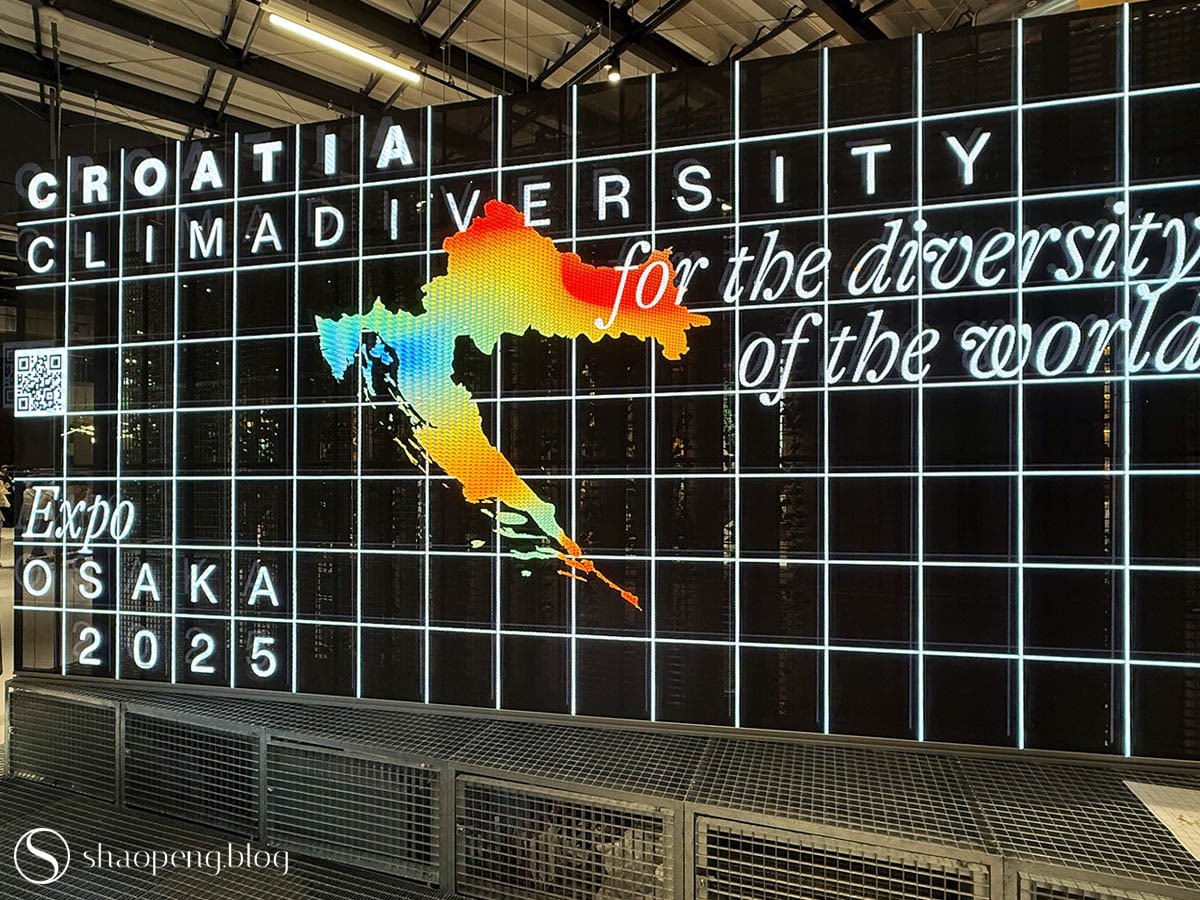


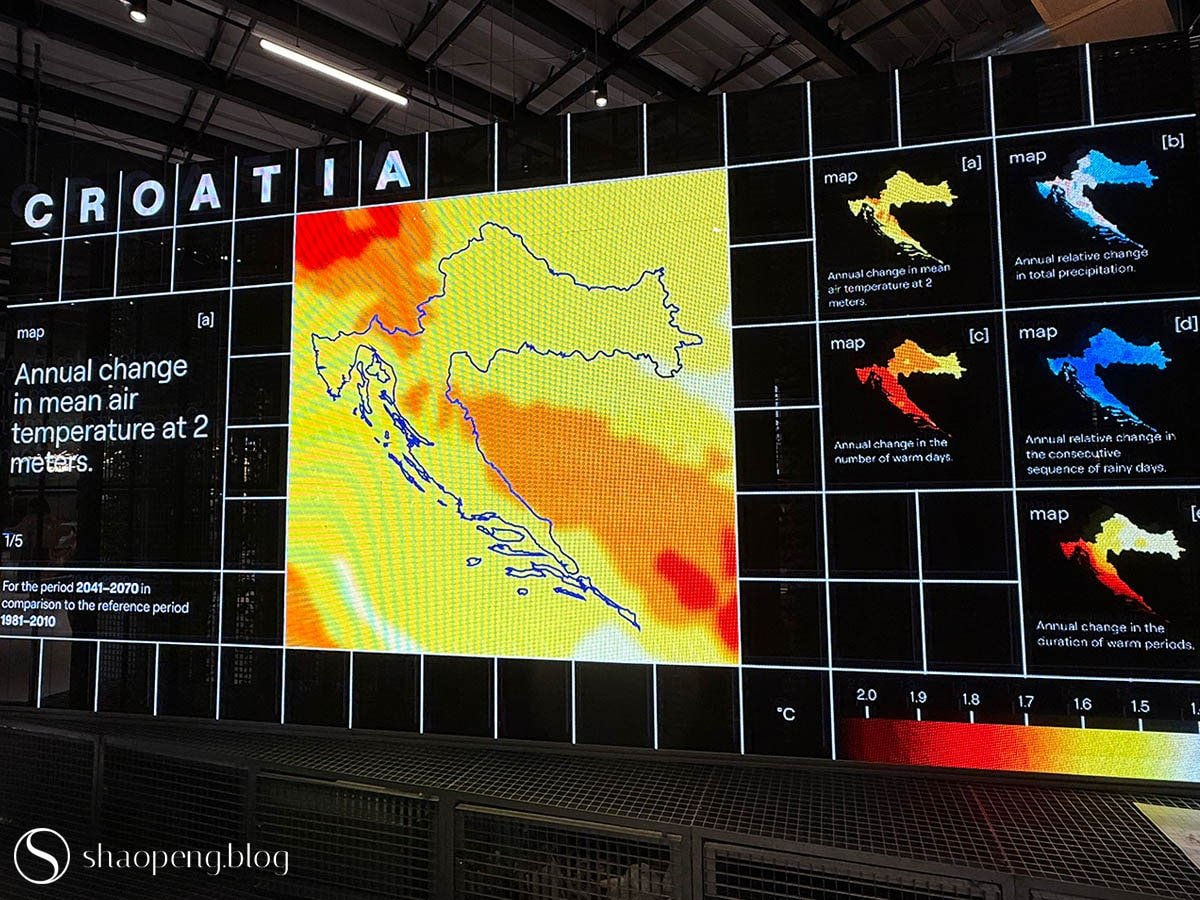


Nestled inside Commons-C, the Croatia Pavilion is easy to overlook — but it turns out to be one of the most surprising experiences of the Expo.
From the outside, it looks like a contemporary art installation: clear tubes cascade from the ceiling in what resembles a sci-fi waterfall. At first glance, I hesitate. But curiosity gets the better of me — and I’m glad it does.
While many pavilions spotlight their country’s culture, nature, or technological achievements, Croatia’s focus is refreshingly different: climate diversity — presented through a sensorial experience.
In this compact space, the pavilion recreates five different climate zones found across Croatia — in real time. Though we’re in Osaka, you feel, quite viscerally, as though you’ve stepped into Croatia itself. How? The answer lies in the tubes.
Data from 45 meteorological stations is processed to simulate the real-time temperature of five regions. Thirteen kilometres of tubes — some sweating, some warm, some cool — regulate the atmosphere through a precise heating and cooling system that moves over three tons of water.
Touch the tubes and you’ll feel the difference. Each colour represents a distinct temperature zone, immersing you in Croatia’s varied climates. It’s a tactile, atmospheric journey — one that reminds you how much landscape shapes life.
Why focus on climate? As the pavilion reminds us: “climate diversity has shaped ecosystems and, in turn, the human cultures that define our identities.” This is the kind of experience that stays with you — it doesn’t just showcase the natural world; it evokes how deeply interwoven it is with who we are.
One final touch: cameras in each zone allow you to see and capture your body temperature in real time. You can even download the image to your phone — a strange but somewhat poetic souvenir.
Tips for wanderer — Pavilions in the Commons tend to have shorter waits. If it’s busy, check back later — it’s worth it.
Sense of Wander: ★★★★☆
🇵🇱 Poland Pavilion

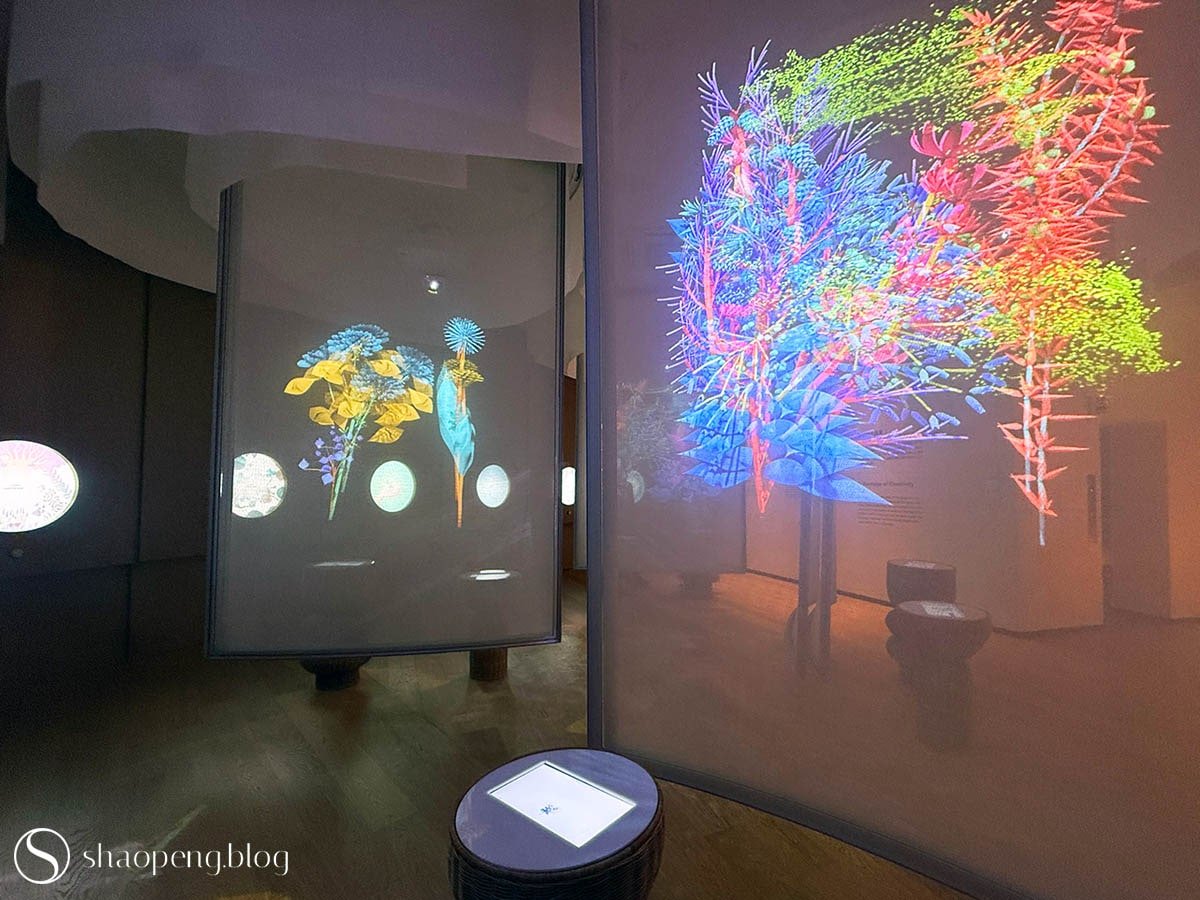


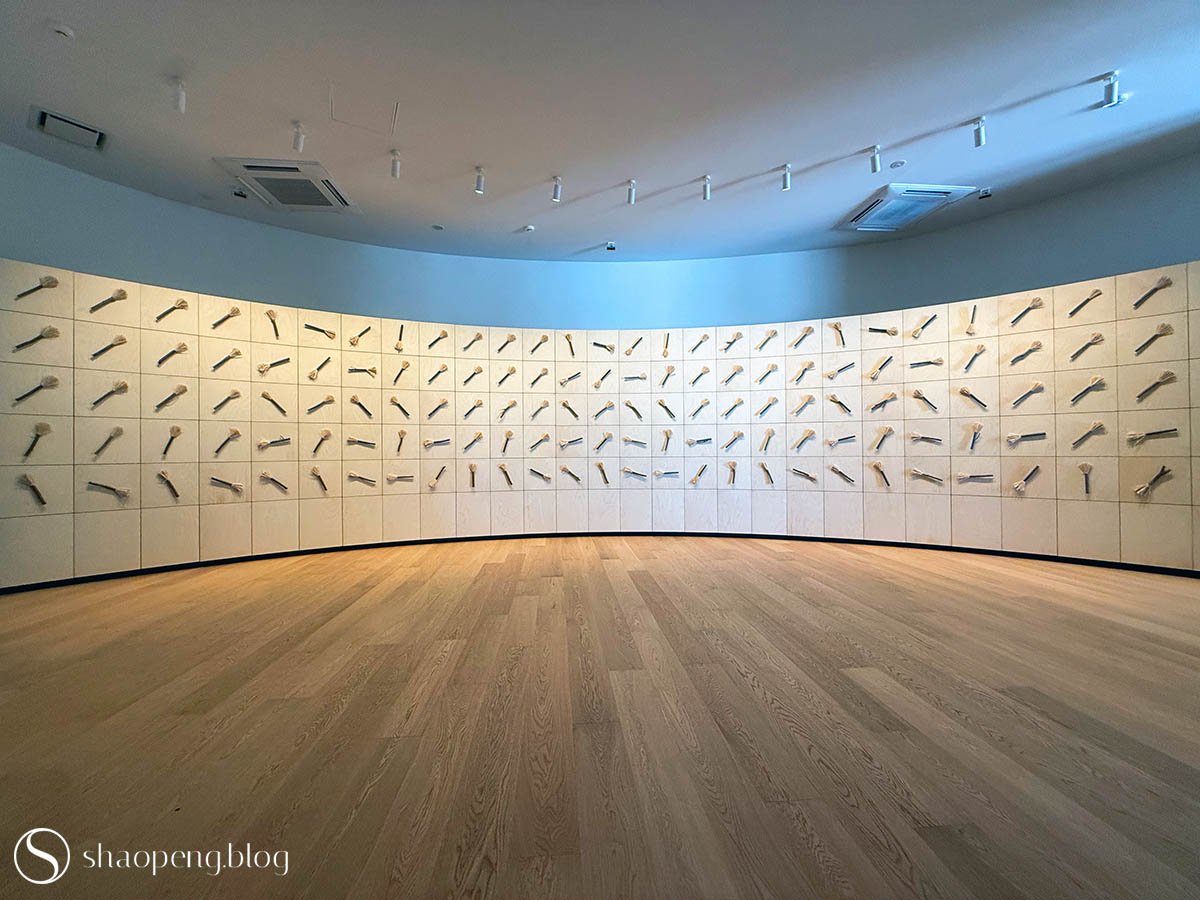




The Poland Pavilion is simply brilliant — not only in concept, but in design.
Its architecture is the first to capture your attention: wooden blocks are joined using the traditional kigumi koho technique, creating a geometric rhythm that flows into sweeping, organic curves. From above, its concentric structure resembles ripples — a symbol of creativity radiating outward.
Inside, the exhibition unfolds like a layered composition. Developed by an interdisciplinary team, it brings together nature, tradition, science, and technology.
You begin with Spirit Plant, an interactive installation that invites visitors to create a digital plant based on a set of values. These algorithm-generated “parametric plants” are shaped by the values you choose. Mine turned into a bouquet of touch-me-not balsam, common dandelion, lovage flower, and mistletoe. Each represented a trait I selected: sensitivity, curiosity, love, and wisdom. The result appeared on a large screen, forming part of a growing visual landscape made by all who passed through.
Next is Pre-Spring, a delicate constellation of translucent spheres, each cradling a different Polish plant species — like botanical specimens suspended in light.
Then comes the highlight: Aura. In this multimedia installation, 140 curious brush-like instruments form an orchestra — not of musicians, but of objects crafted from traditional materials. Through digital programming, composer and instrumentalist Jerzy Rogiewicz channels the spirit of Chopin, drawing from folk melodies and the sounds of nature. The instruments, made partly from willow collected near Chopin’s birthplace in Żelazowa Wola, turn gently like clock hands, creating soft, rustling textures. Viewers are said to influence the performance subtly, co-creating the piece through their very presence.
Near the end of the exhibition, a wall is lined with verses written by young Polish poets, inspired by Japanese haiku. Snippets of their poetry are also woven throughout the space, and visitors are invited to take home a printed card as a keepsake.
As you exit, a panoramic projection exhibits a growing garden of spirit plants created by those who came before you. Look closely — you might spot yours blooming there, like a footprint of thought.
Tips for wanderer — The Poland Pavilion is one to slow down in — a place worth lingering. Compact yet rich in meaning, it rewards those who give it unhurried attention. Allow yourself at least 30 minutes to take it all in.
Sense of Wander: ★★★★★
🇱🇻🇱🇹 The Baltics Pavilion

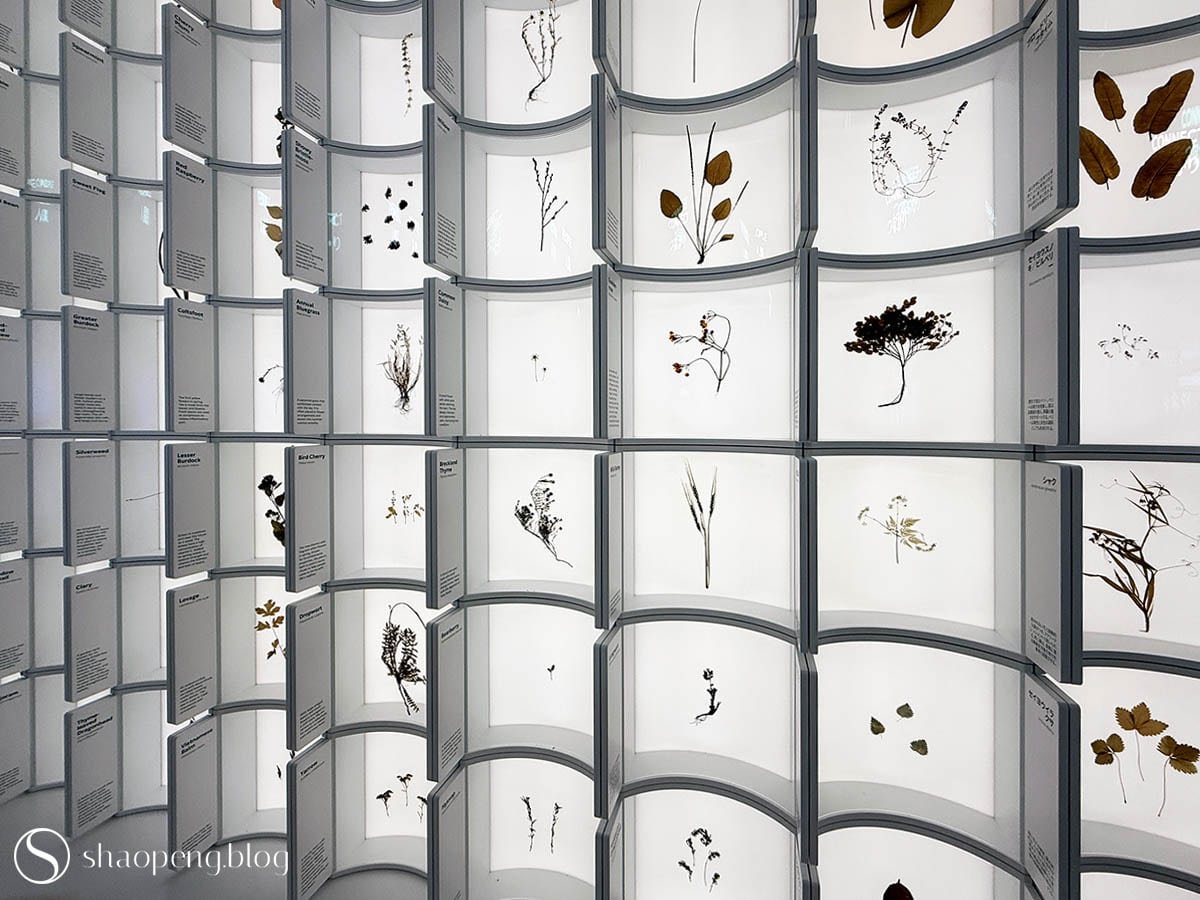
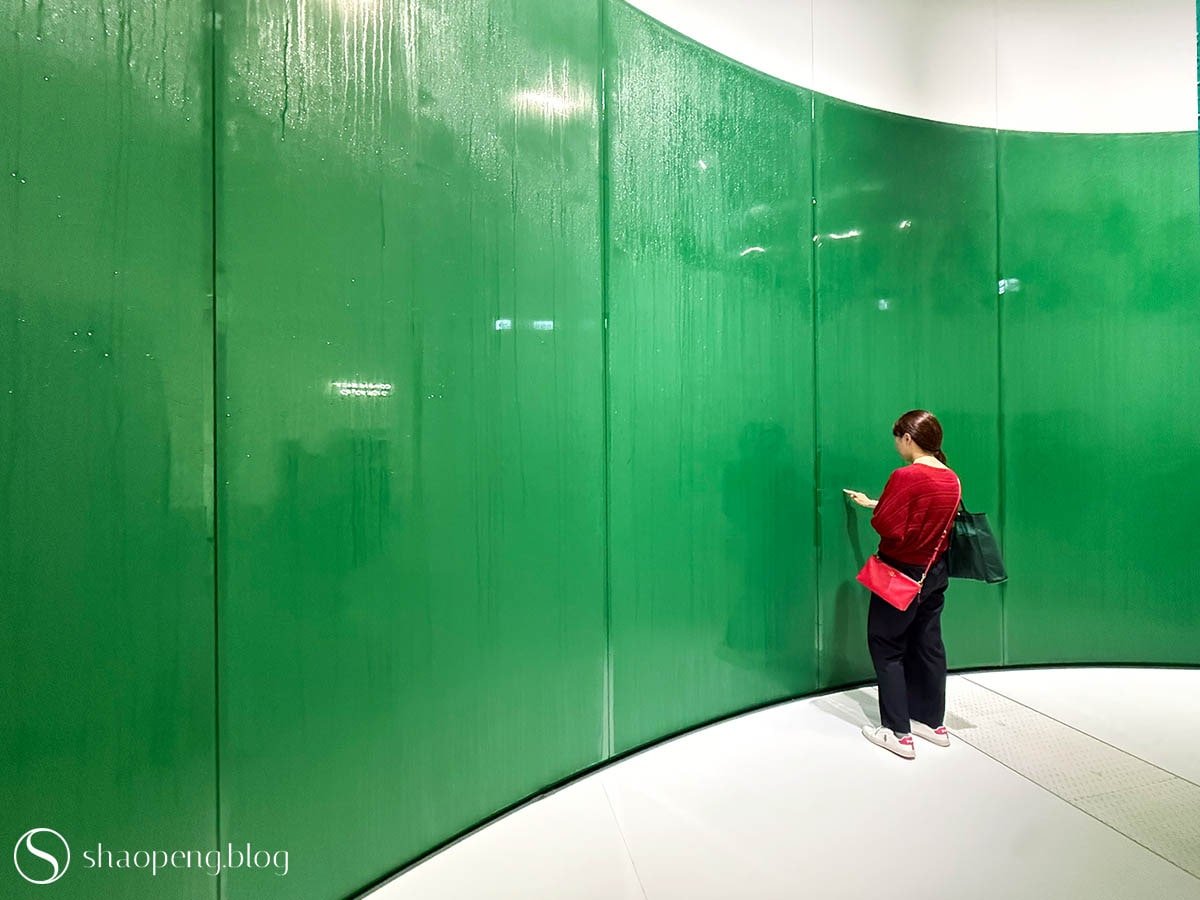




My visit to the Baltics Pavilion is light and unexpectedly uplifting — like a walk through a sunlit forest.
The space represents two Northern European nations — Latvia and Lithuania — whose shared heritage, language roots, and deep cultural ties stretch along the Baltic Sea.
Nature is not just a theme here; it is the thread that binds everything together.
The journey begins with Nature’s Pharmacy, a stunning wall of nearly 300 preserved plant specimens collected from Baltic meadows. These medicinal plants — rooted in Latvian and Lithuanian folklore — have long supported the well-being of local communities. Now, this ancestral wisdom is finding renewed relevance in pharmaceutical and biocosmetic innovations.
The heart of the pavilion is the Kizuna Wall — named after the Japanese word for “connection.” Its green surface, moisturised with water droplets, allows visitors to write messages using just their fingertips. I trace out the word LOVE without hesitation. The wall prompts a simple yet powerful reflection: how are we connected — to the Earth, and to one another?
You’ll also encounter Barabi-chan, the pavilion’s charming mascot and Baltic Forest Ambassador — a fusion of Baravika (Latvian) and Baravyka (Lithuanian), both meaning porcini mushroom. Playful and symbolic, Barabi-chan adds a gentle warmth to the experience.
Before leaving, I spot a capsule grocery store — a vending machine — offering products from the Baltics. I hope to try the canned birch juice, but it’s already sold out.
Tips for wanderer — The Baltics Pavilion usually has minimal wait time. Step inside for a calm, nature-infused experience — a gentle pause amid the often overwhelming narratives found in other pavilions.
Sense of Wander: ★★★★☆
🇩🇪 Germany Pavilion
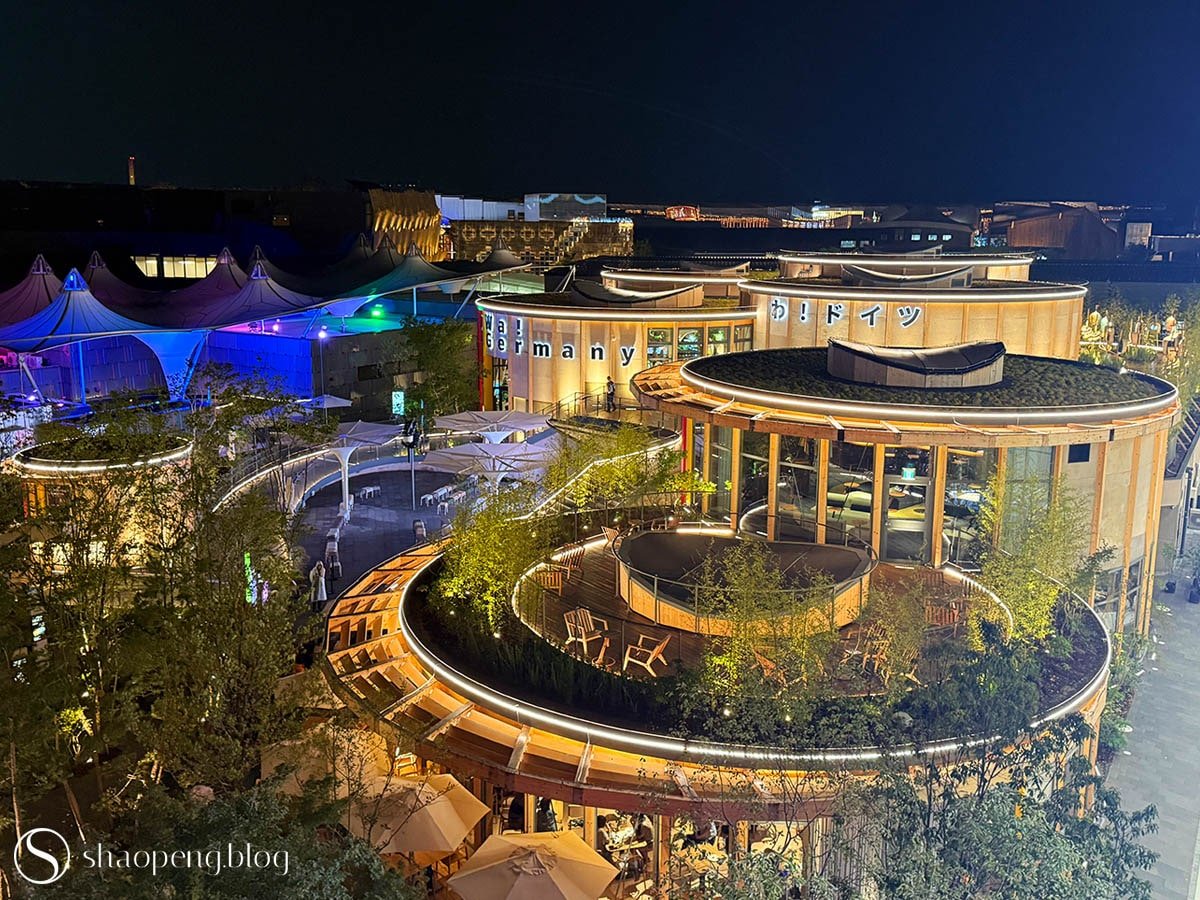

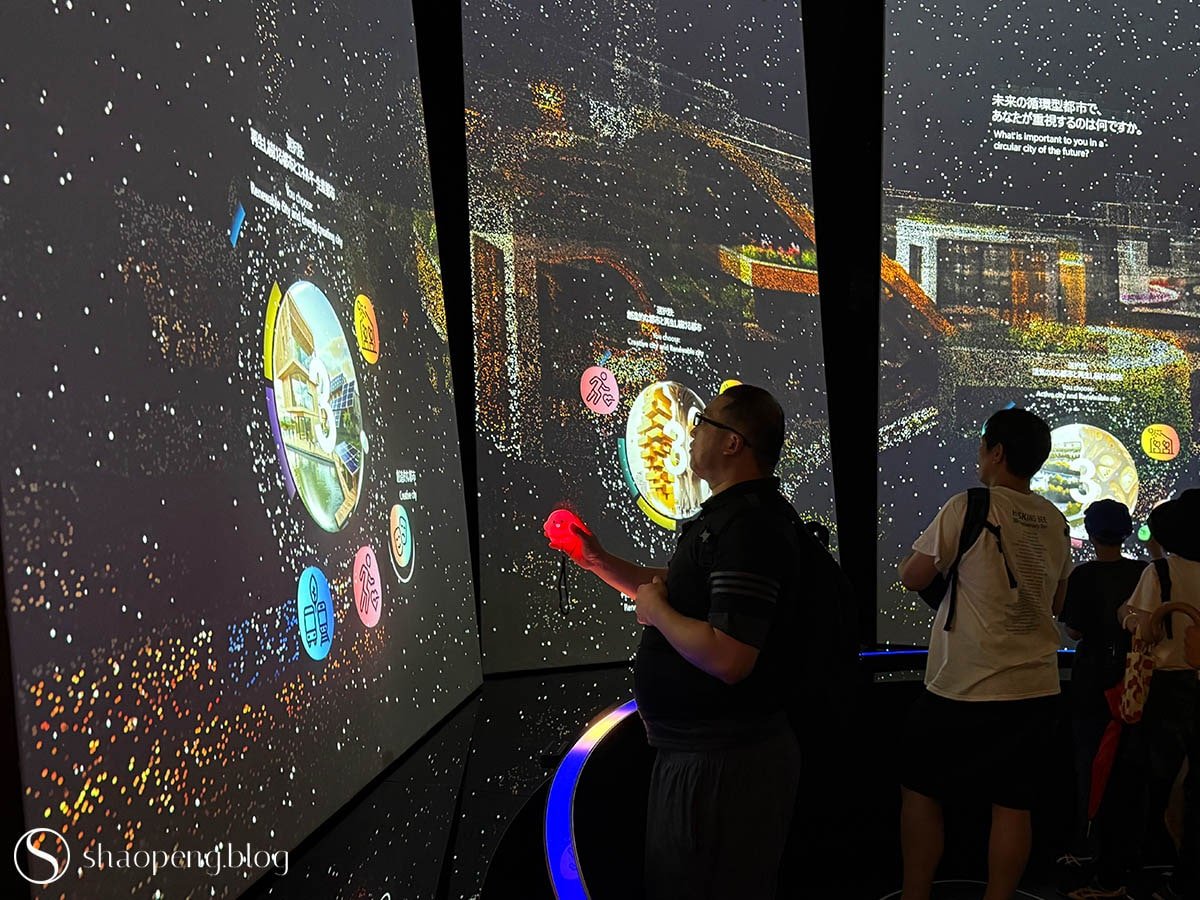



The Germany Pavilion isn’t originally on my list, but while wandering along the Grand Ring, its design captures my attention. The complex is vast — seven circular wooden structures joined together, embodying the pavilion’s theme: Circular Economy.
This concept, the pavilion explains, shapes our future. It “enables sustainable economies to leverage the holistic closing of material cycles” by returning all consumable goods back into the cycle and aiming for zero waste.
Its title, Wa! Doitsu — “Wow! Germany” in English — plays with the Japanese word wa (わ), which carries several meanings, including “circle” and “harmony.” This harmony reflects the balance between nature and technology that the circular economy strives for — a philosophy evident not only in the pavilion’s architecture but in Germany’s urban initiatives.
With unique, carefully curated experience, the journey is immersive from the start. At the entrance, each visitor receives an audio guide designed as the pavilion’s mascot — a chubby, kawaii-inspired character glowing hot pink in the dark, as if made just for me. With this little companion in hand, I dive deeper into the themes across the galleries. Informative and thoughtfully curated, this is one of the most rewarding exhibitions I’ve experienced here at the Expo.
Toward the end, a circular gallery lined with sofas invites visitors to lie back and relax, watching a kaleidoscopic video projection. It encourages reflection on conscious choices that could lead us toward a truly circular life.
Tips for wanderer — The Germany Pavilion is dense with information. To fully absorb it, set aside at least an hour.
Sense of Wander: ★★★★☆
🇫🇷 France Pavilion
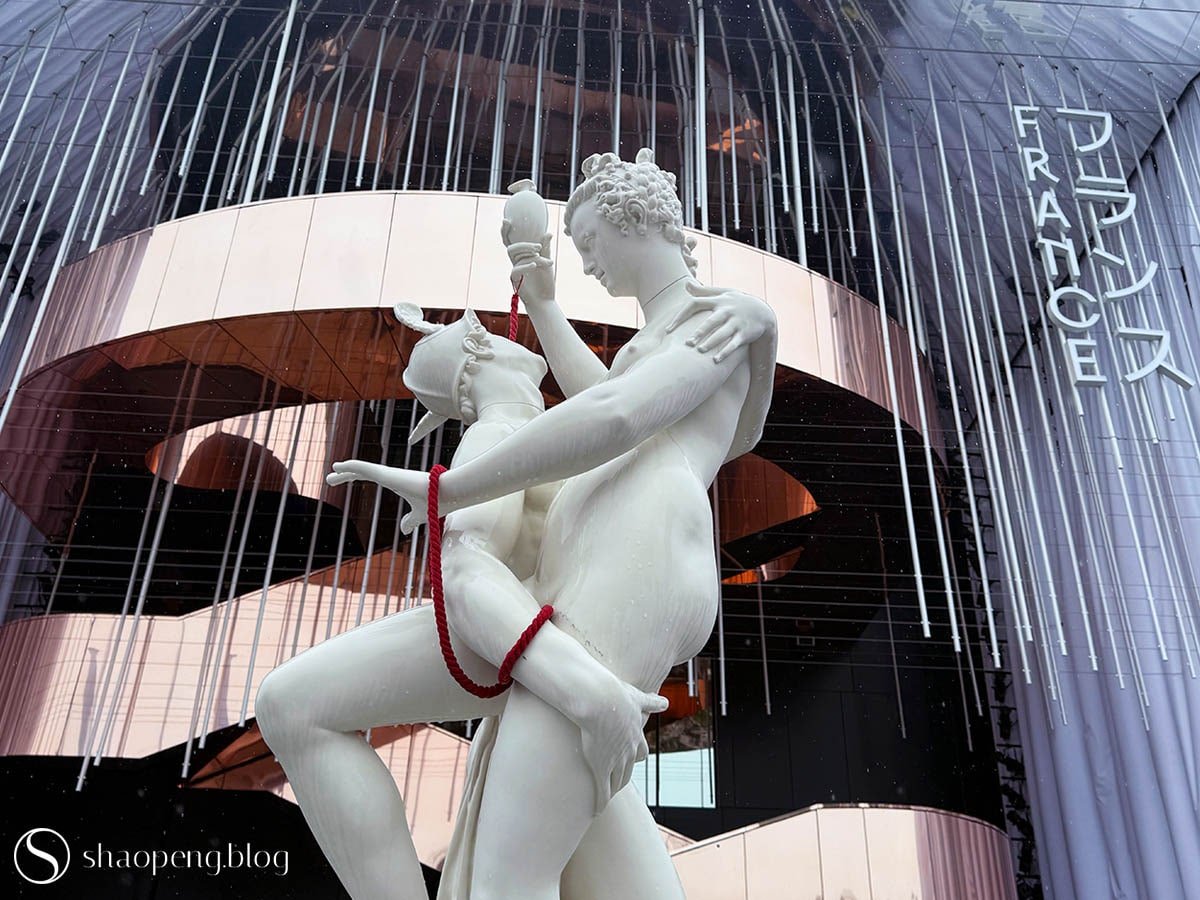


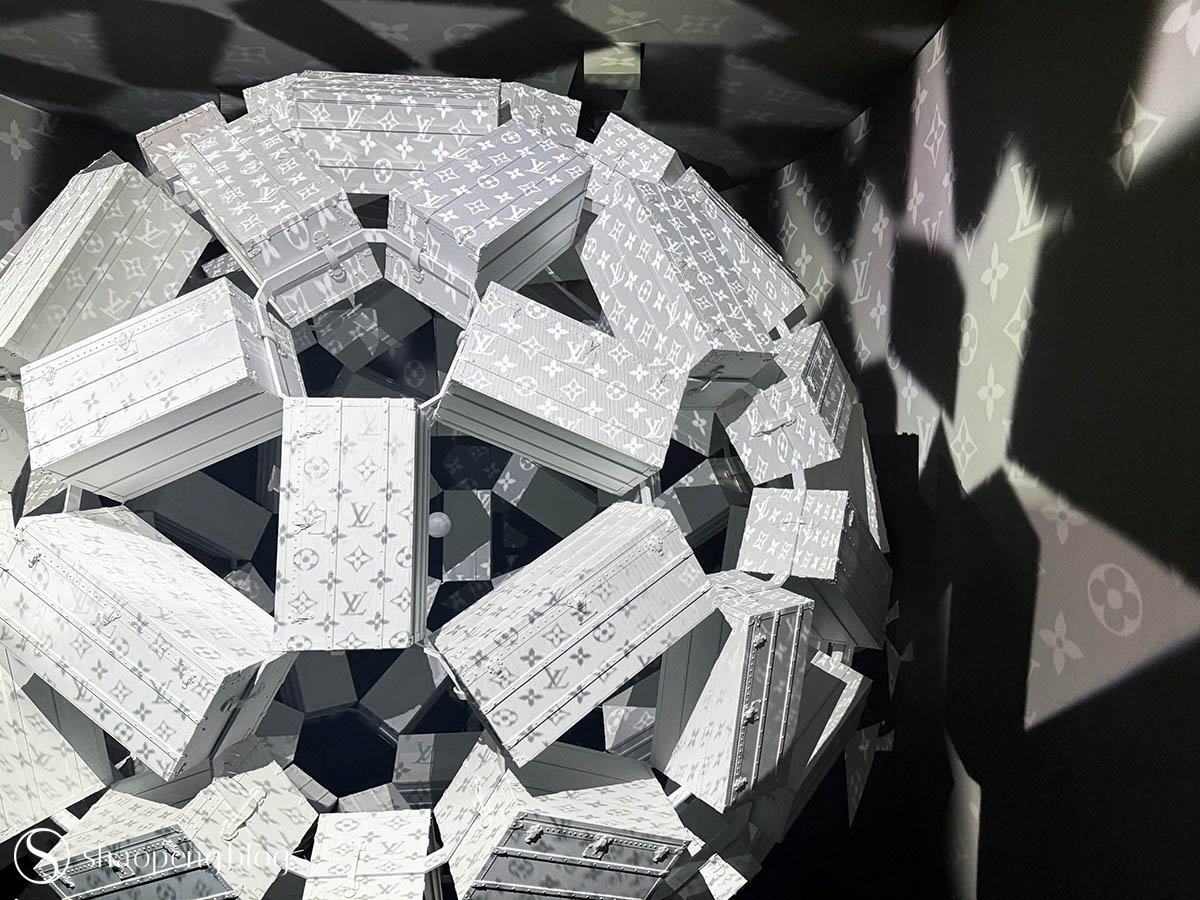





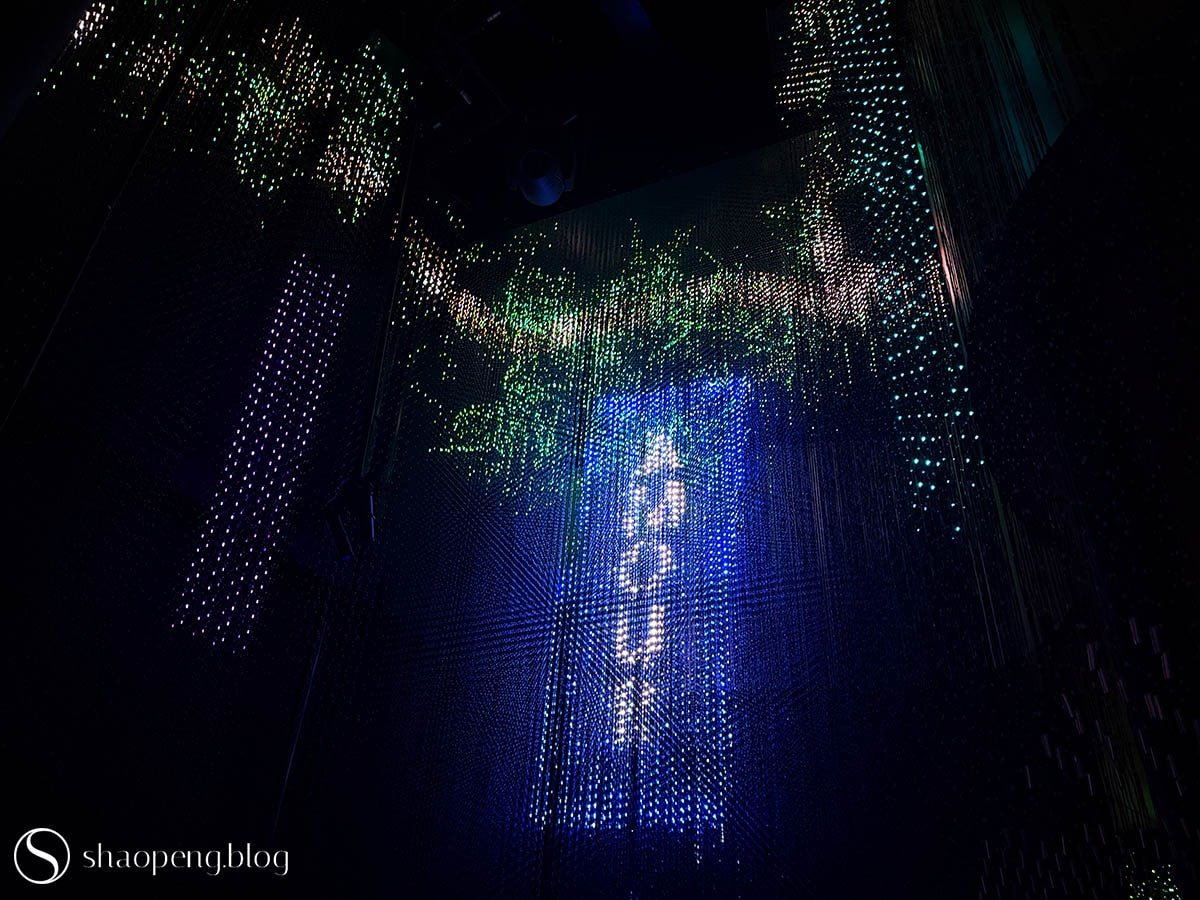

If there’s one pavilion you can’t miss at Expo 2025 Osaka, it’s the France Pavilion. Located near the East Gate entrance, it’s always buzzing with a queue of eager visitors.
What draws me here isn’t the crowd, but the pavilion’s theme — love. A sentiment at the core of humanity, yet often overlooked, if not forgotten. I first discover this theme on their website and feel an immediate connection.
At the entrance, “Hymn to Love” begins to play as I see a reproduction of the 16th-century sculpture Mercury Abducting Psyche (Mercure enlevant Psyché). Mercury lifts Psyche, a mortal, to Mount Olympus — a myth where Psyche ultimately becomes immortal to unite with Cupid, the god of love.
This celebration of love fulfilled is one of four sculptures illustrating “Love at First Sight,” displayed outside the pavilion. A closer look reveals a red thread binding the two figures — a nod to the Japanese legend of akai ito, an invisible string that connects destined lovers by their little fingers.
Inside, visitors embark on Pulsations — a journey through eight immersive galleries celebrating the profound connection between France and Japan. From a “library of craft” made from Louis Vuitton trunks to the artistry of Dior’s emblematic white toiles, you’re introduced to French luxury and refined aesthetics. Then, you descend into a subterranean Alsace landscape, contemplating how earth, sun, water, and vine combine with human expertise to create a nectar nature alone could not.
Throughout the exhibition, you’ll see Rodin’s sculptures of joined hands appear repeatedly, symbolising unity, protection, sharing, shaping, and creation.
The experience culminates in Across the Archipelago, an immersive light show featuring three conceptual islands, each with a miniature iconic landmark representing France and Japan. As the show closes, the word AMOUR — French for “love” — pours forth, a powerful reminder that love is our greatest gift and strength, capable of overcoming the world’s challenges.
I never imagined love could be told through cultural and natural heritage. Feeling inspired, I continue my wander to the next pavilion…
Tips for wanderer — The queue here is long but moves steadily. Waiting time is shorter than expected.
Sense of Wander: ★★★★★
🇪🇸 Spain Pavilion

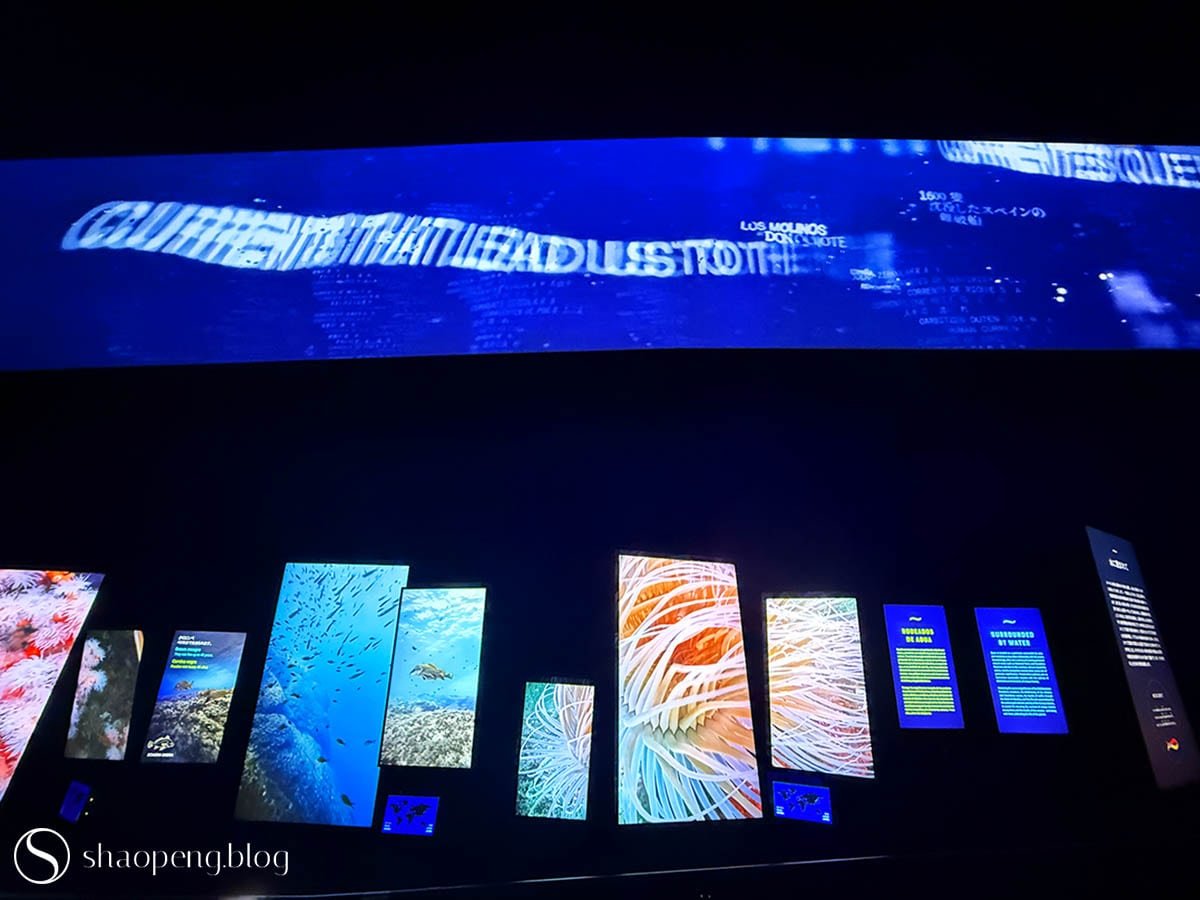

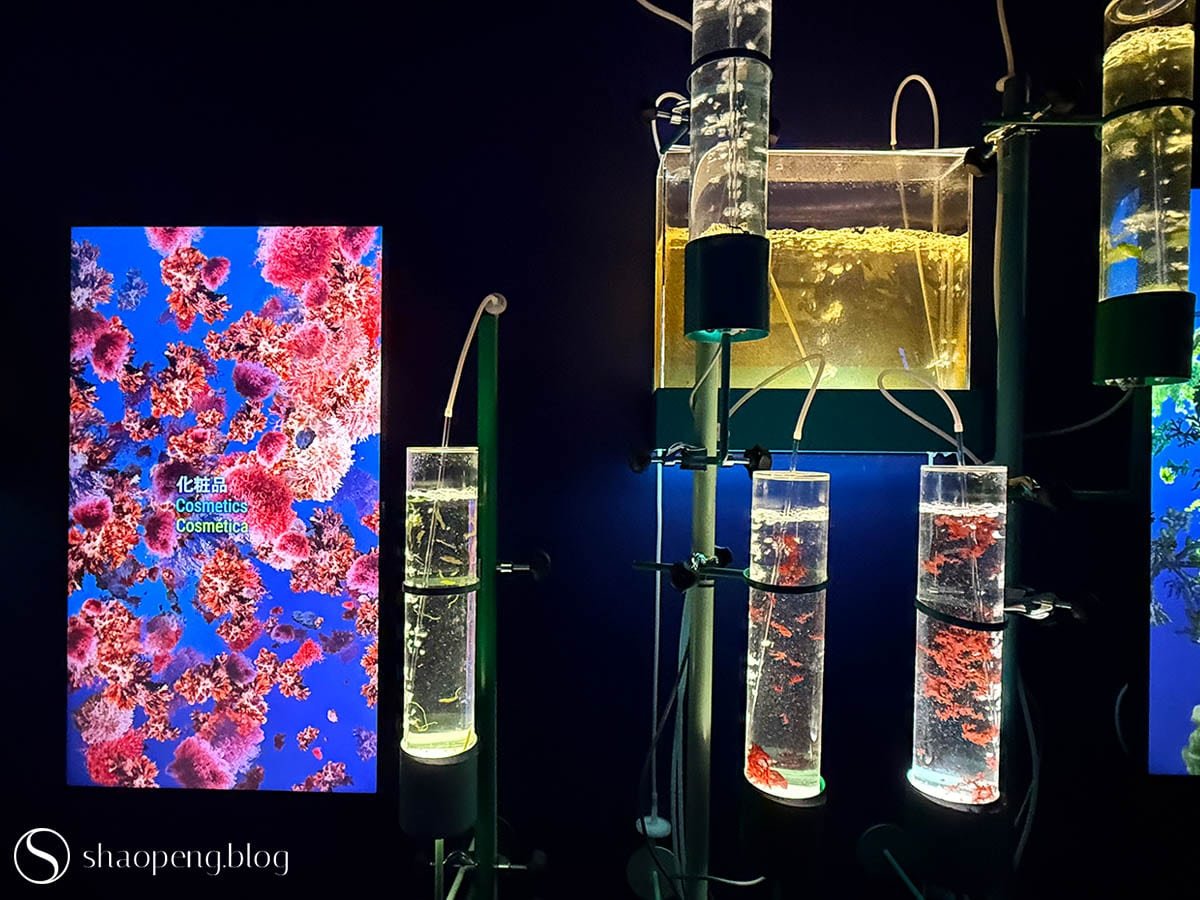

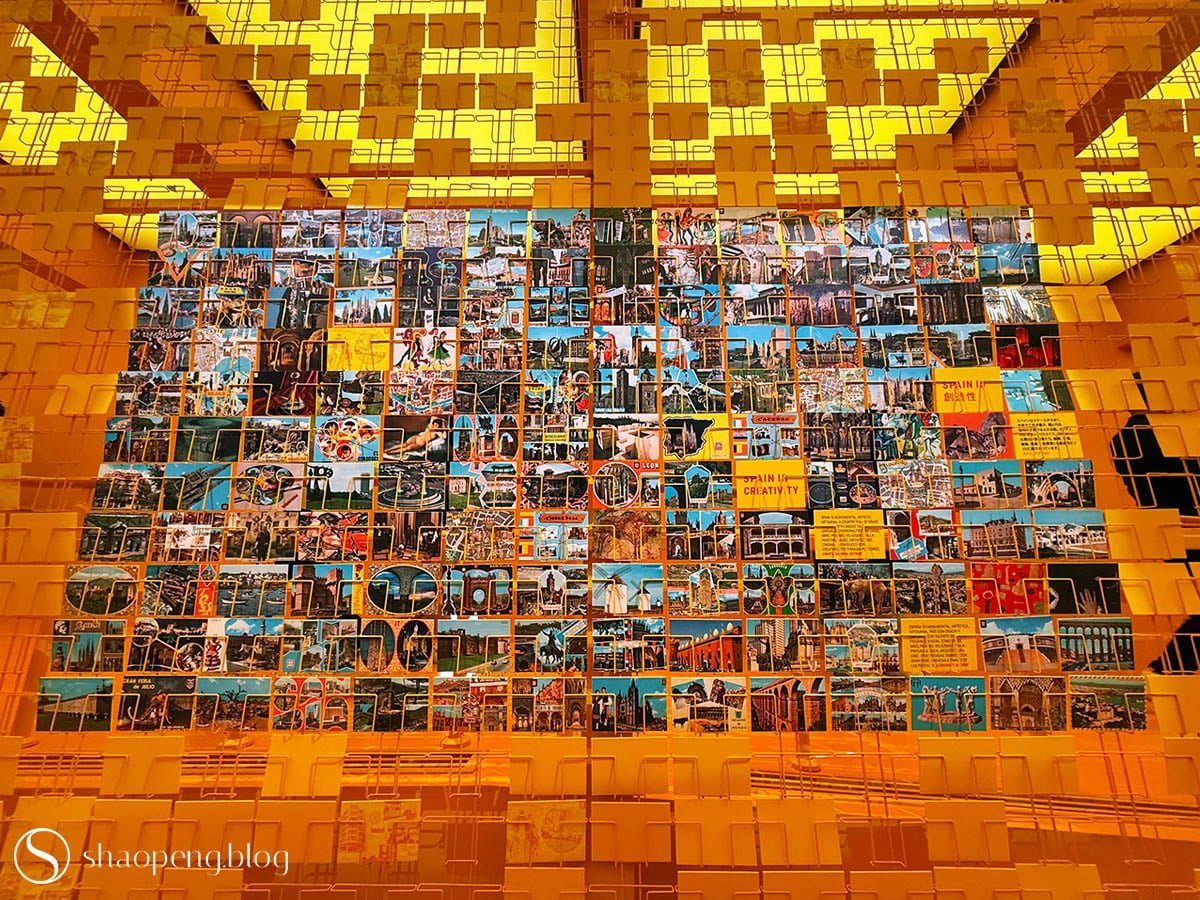
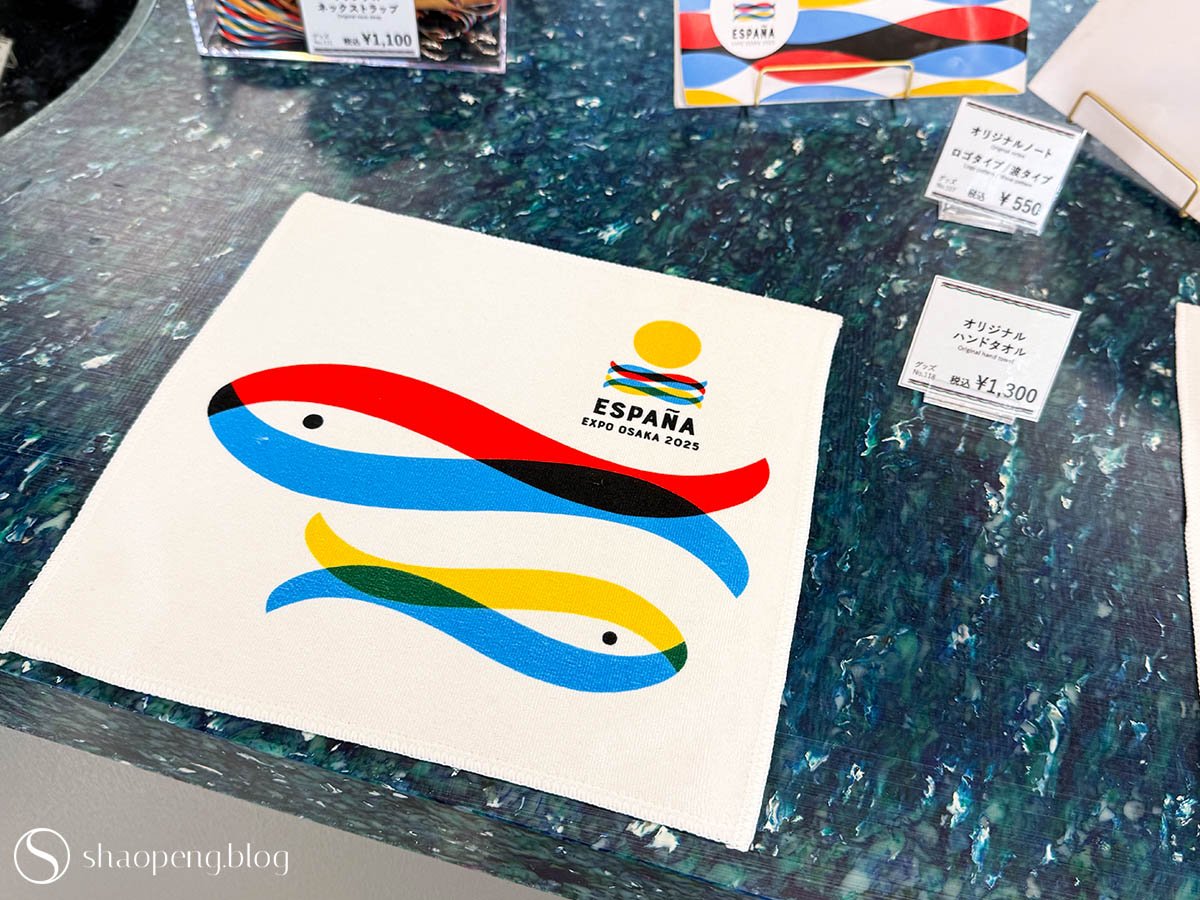
In the evening, the Spain Pavilion commands attention. A staircase lit in blue — evoking the ocean — leads upward, framing a glowing sun at its centre. Together, sea and sun gesture toward the national identities of both Spain and Japan.
The theme, The Kuroshio Current, pays homage to an invisible thread that links the two countries. Like the Gulf Stream in Spain, the Kuroshio is more than a natural phenomenon — it has long shaped navigation routes, forging cultural and commercial ties between continents. It becomes both metaphor and memory: a current that carries stories of yesterday and sets new ones in motion.
Inside, the exhibition traces this centuries-old relationship, beginning with a historic exchange between Spanish King Felipe III (reigned 1598-1621) and Shogun Tokugawa Ieyasu (reigned 1603-1605) — a moment that marked one of the earliest connections between the two nations.
The ocean remains central. A gallery explores the sea not only as a route, but as a resource — glowing species of seaweed shimmer in the dark, displayed in lab-like tanks that feel more like an underwater dream than an exhibition.
Moving further in, light floods the next gallery. The mood shifts from the deep blues of the ocean to a warm orange glow — the colour of the sun at its zenith, and of Spain itself: vibrant, passionate, alive. In Greetings from Spain, a collage of postcards show Spanish landmarks, accompanied by a multimedia installation that pulses with sound and colour.
A series of video panels — each showing scenes from across the country — carries me away. I drift into my own thoughts, watching the reel unfold again and again. It’s joyful, heartfelt, and full of surprises — like receiving postcards from a friend across the sea.
Tips for wanderer — Visit after sunset — the experience is more vivid, and there’s usually no queue.
Sense of Wander: ★★★★★
🇪🇺 European Union Pavilion
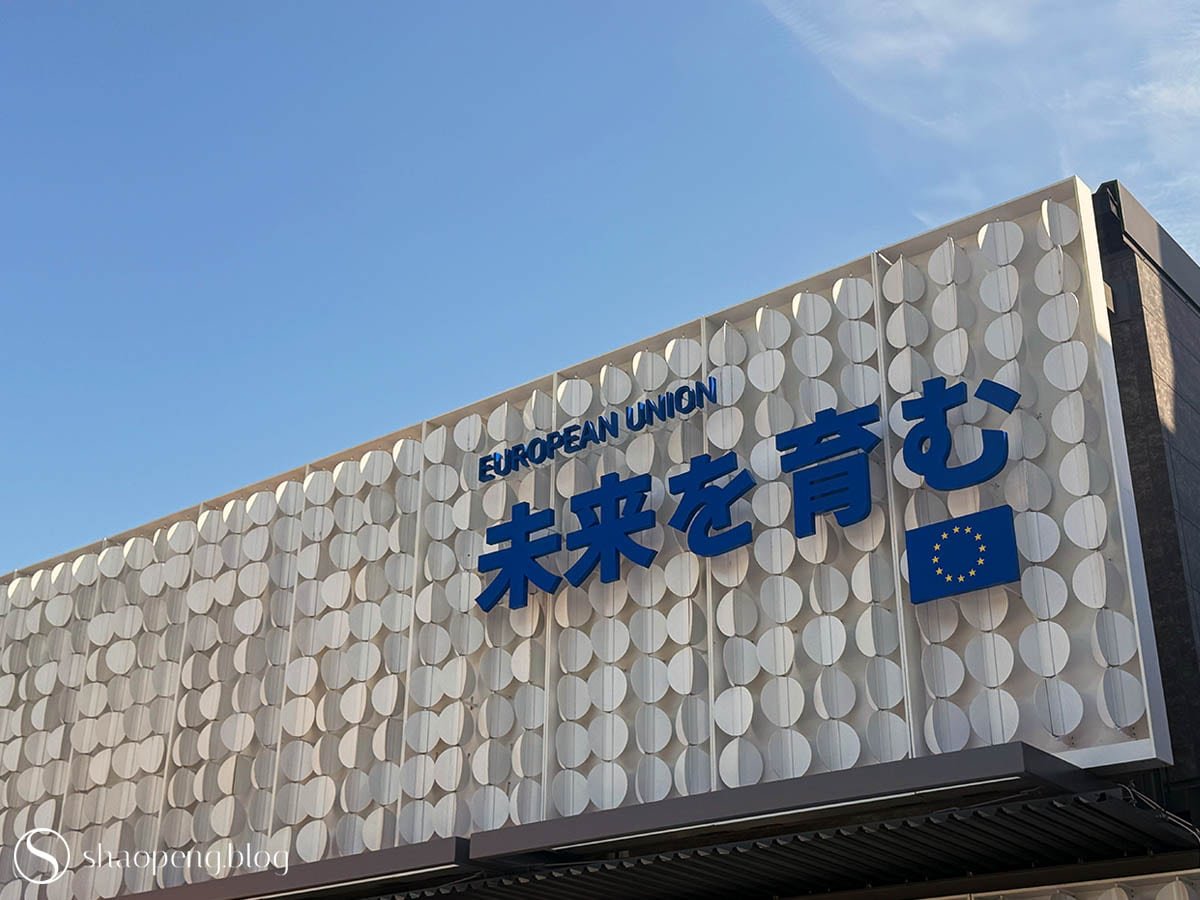
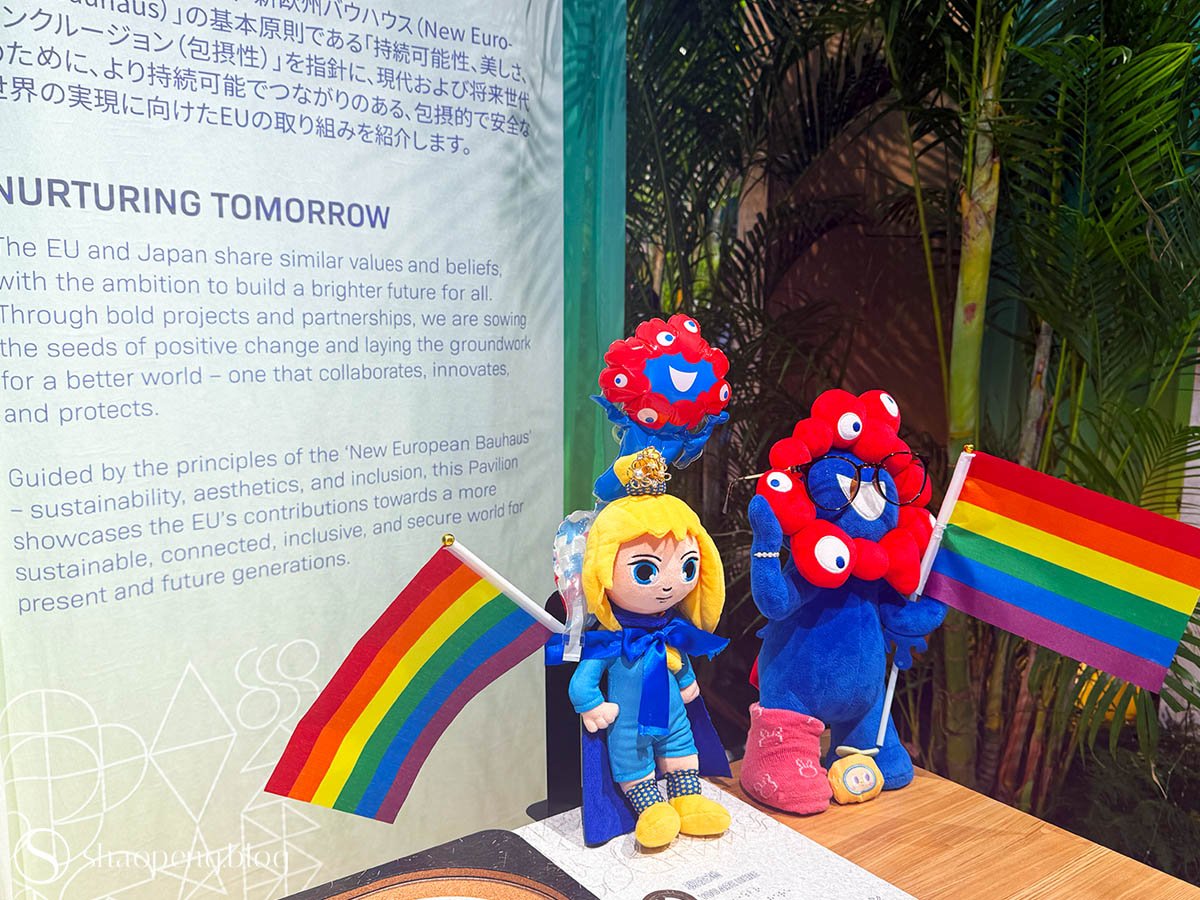


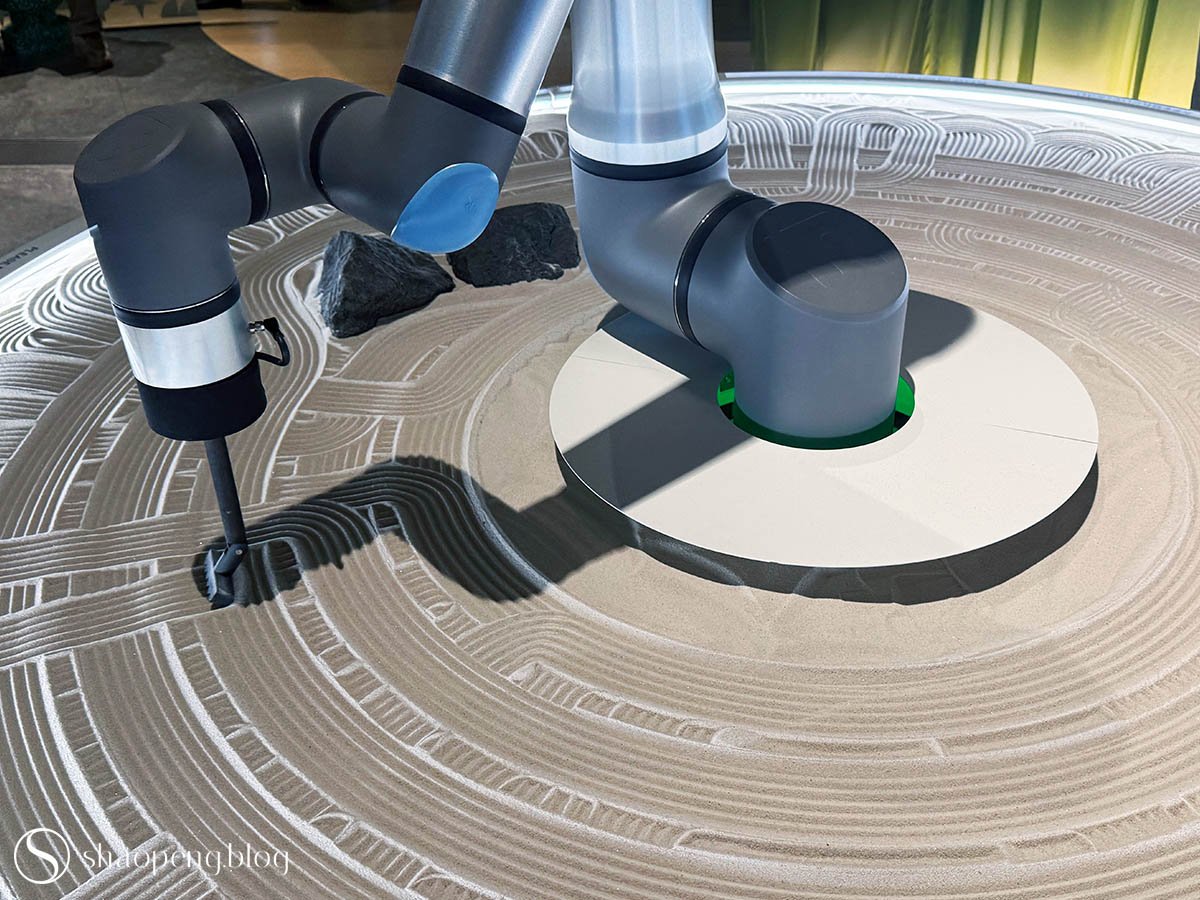


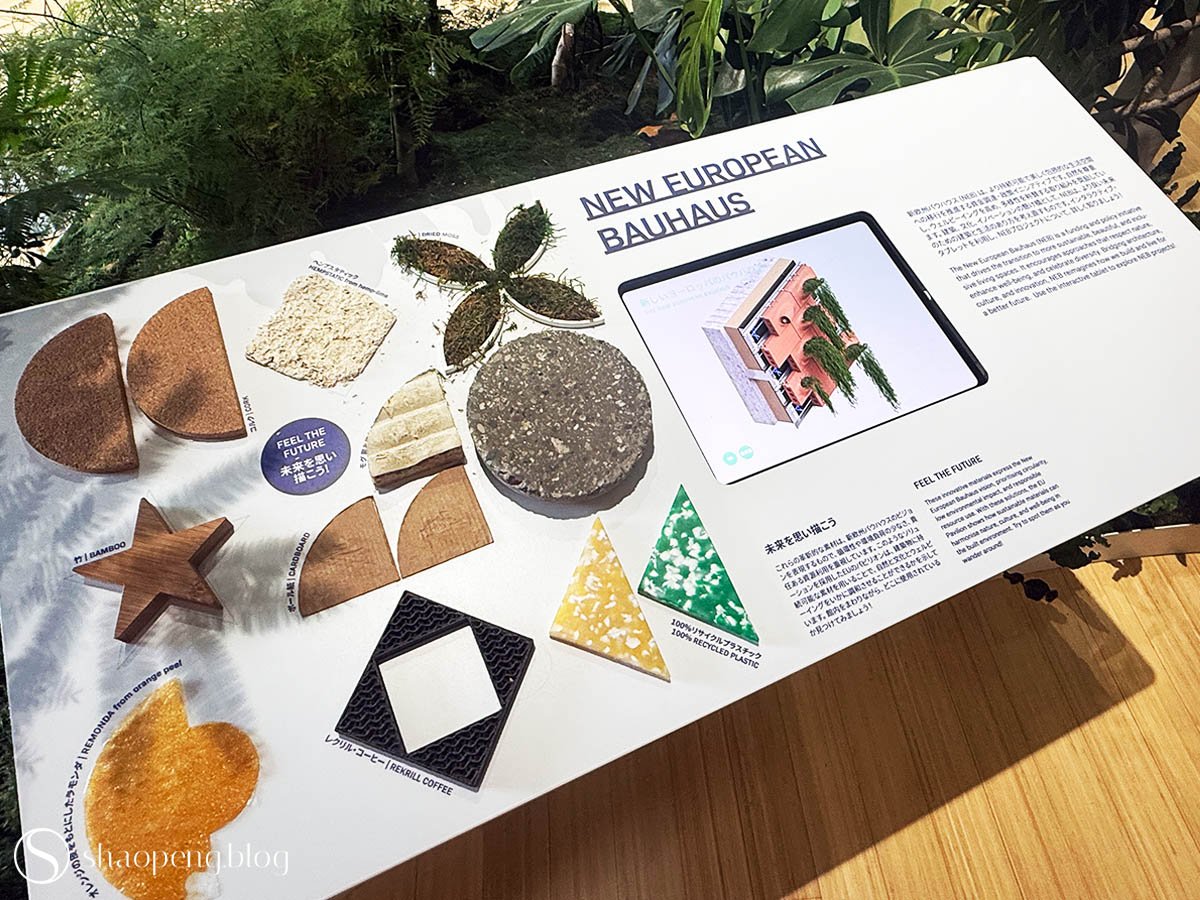
I enter the European Union Pavilion out of curiosity. With so many European pavilions spread across the Expo, I wonder what this collective space will offer — and it turns out to be far more engaging than expected.
The exhibition opens with an introduction to the “New European Bauhaus,” a vision rooted in three core values: sustainability, aesthetics, and inclusion. It’s a thoughtful framework — one that guides each part of the experience.
Here, immersive installations invite quiet reflection and participation. A potted plant, connected to a sensor, allows visitors to touch a real leaf and watch its digital twin grow on screen. It’s a one-of-a-kind interaction, but also a lesson in sustainable agriculture and food systems — a European Union (EU) initiative brought to life through technology and care.
Nearby, a robot tends to a Zen garden, slowly drawing patterns in the sand. If you watch long enough, it pauses and lifts its “head” to greet you in one of the EU’s 24 official languages. A brief but disarming moment of connection.
But the most poetic gesture comes at the Digital Origami Birds station. Inspired by the Japanese art of origami (meaning “paper-folding”), visitors are invited to fold a digital dove and release it into the shared space — a symbol of hope, peace, and cooperation, that’s especially relevant in this time of global unrest.
But the most poetic gesture comes at the Digital Origami Birds station. Inspired by the Japanese art of origami (meaning “paper folding”), visitors are invited to fold a digital dove and release it into the shared space — a symbol of hope, peace, and cooperation — something that today’s world seems to need more than ever.
Tips for wanderer — The EU Pavilion rarely has a queue. If it does, simply coe, back later — the space is best experienced unrushed.
Sense of Wander: ★★★★☆
🇺🇳 United Nations Pavilion
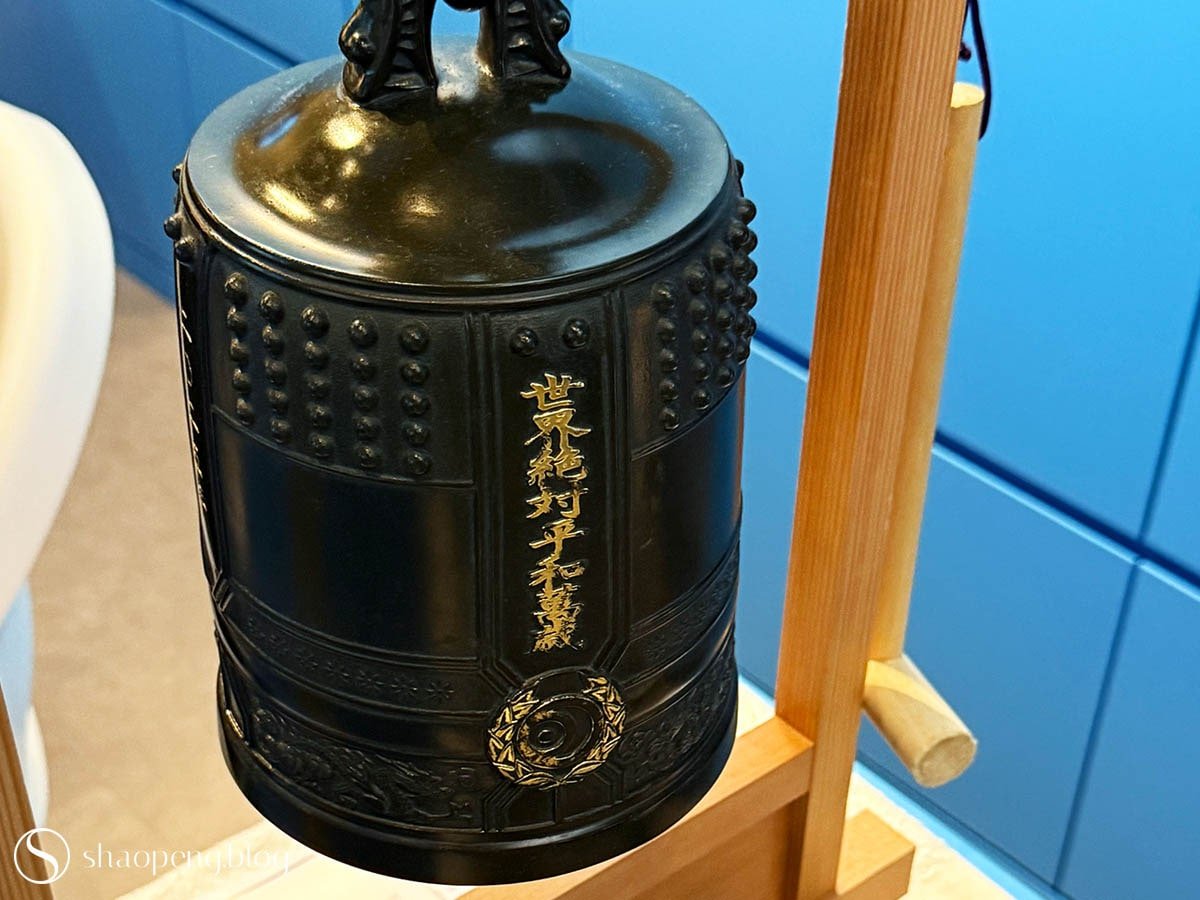

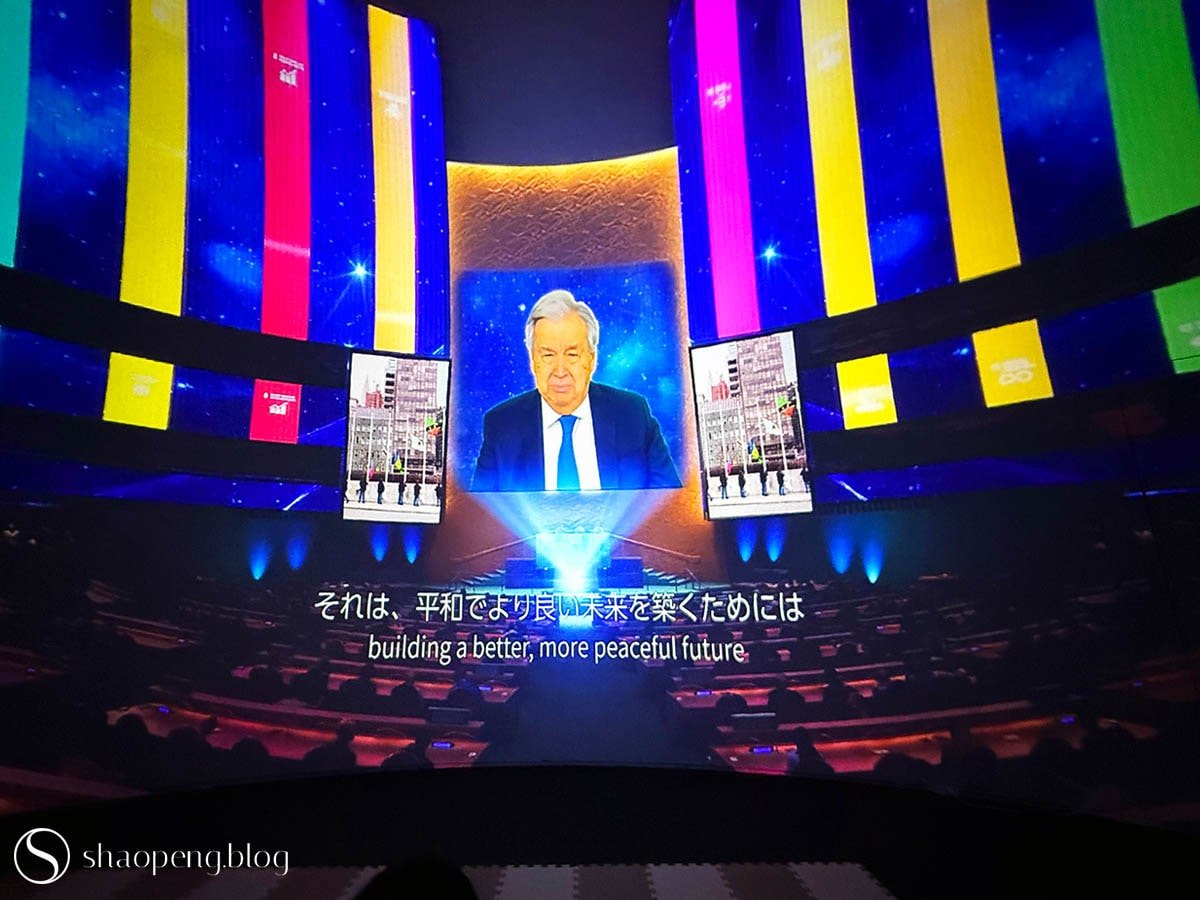

There’s no better way to close this Wanderer’s Guide than with a final stop at the United Nations Pavilion.
With the theme United for a Better Future, the pavilion offers a window into the works of the United Nations (UN) around the world — from responding to humanitarian crises and vaccinating children, to promoting human rights and protecting the planet.
Inside the Orb Room, everyday objects take centre stage. Each one — simple and familiar — reveals a deeper connection to the lives touched by the UN’s efforts. The experience culminates in the theatre, where a speech by Secretary-General António Guterres reminds us: “Building a better, more peaceful future requires all countries, and all people, working as one.”
Though modest in size, the UN Pavilion feels like a thoughtful final note. In a global gathering like Expo 2025 Osaka, we’re invited to look ahead — not just toward any future, but one shaped by shared responsibility. A future that’s more sustainable, more inclusive — and hopefully — more united.
Each pavilion in this guide has planted a seed — a spark of curiosity, a question, a shift in perspective. The UN Pavilion gathers these quiet reflections and reminds us: change begins with awareness, and grows with action.
Tips for wanderer — Don’t forget to stop by the gift shop. I recommend the UN tote bag — a meaningful souvenir offered at a fair price.
Sense of Wander: ★★★☆☆

